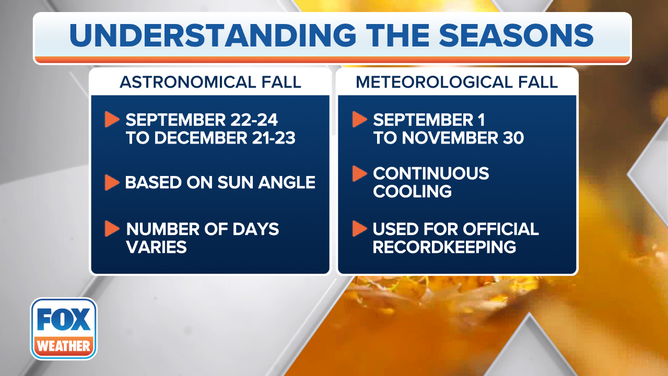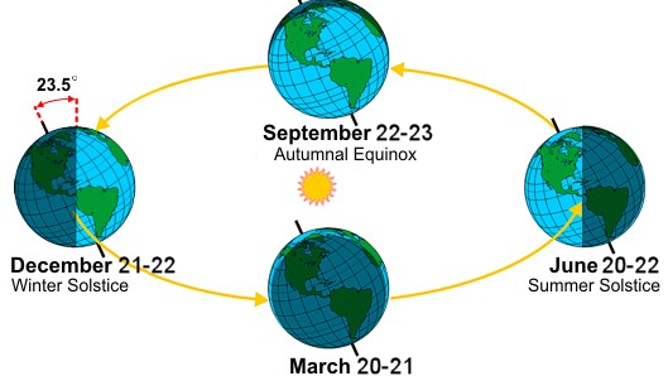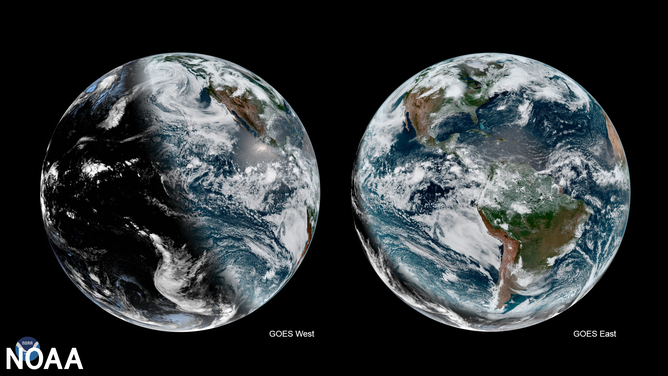Why is the first day of fall on September 22?
In 2024, the autumnal equinox occurs Sept. 22 at 8:43 a.m. ET, marking the start of fall.
What is an equinox? The science behind the astronomical seasons explained
The vernal equinox marks the beginning of astronomical spring and occurs in the Northern Hemisphere around March 20th, whereas the autumnal equinox falls around September 22nd.
Fall officially begins in the Northern Hemisphere on Sept. 22 with the autumnal equinox as the entire world experiences equal hours of daylight and darkness.
For ease of recordkeeping, meteorologists and climatologists consider Sept. 1 the first day of autumn, but astronomically speaking, the Earth’s equator is aligned directly with the Sun on the autumnal equinox. In 2024, that occurs Sept. 22 at 8:43 a.m. ET and marks the start of the season.
FALL FOLIAGE TRACKER: WHERE AND WHEN TO SEE THE MOST BRILLIANT COLORS ACROSS THE U.S.

The start of fall depends on whether you're referring to the astronomical or the meteorological start.
(FOX Weather)
Does fall always start on September 22?
Astronomical seasons are based on the position of the Earth with respect to the Sun as the planet makes its annual revolution around this closest star. So fall usually starts on Sept. 22 or 23 but can also occur on the 21st and 24th, as well.
The Earth is tilted approximately 23.5 degrees off a vertical axis, and because of this tilt, the most direct sunlight is aimed at the Northern Hemisphere during our astronomical summer and at the Southern Hemisphere during our astronomical winter.
Astronomical summer in the Northern Hemisphere spanned June 20 to Sept. 22 this year. That was astronomical winter in the Southern Hemisphere.
OVER 300 MILLION BIRDS START ANNUAL FALL MIGRATION TO THE SOUTH FOR THE WINTER

The Earth's orbit around the sun gives our planet its four seasons.
(NOAA)
The two solstices and two equinoxes are simply precise moments in time when the Sun is in direct alignment with three distinct bands of latitude.
Their dates can vary by a day or two each year since it takes the Earth 365 days and 6 hours (365.25 days) to make one full revolution around the sun, which is why we have a leap year every four years.
What happens on the summer solstice, and how does it affect us?
On the summer solstice in June, the sun’s most direct rays are positioned over the Tropic of Cancer (23.5 degrees north latitude), while on December’s winter solstice, the most direct rays of sunlight are in alignment with the Tropic of Capricorn (23.5 degrees south latitude).
On the autumnal equinox in September and the vernal (spring) equinox in March, the equator (0 degrees latitude) is aligned directly with the sun. Therefore, everywhere on Earth experiences an equal 12 hours of day and night because the sun rises due east and sets due west.
WHY FALL SHOULD ACTUALLY BEGIN ON SEPTEMBER 1
In the summer, the sun rises in the northeastern sky and sets in the northwestern sky, providing long days and short nights. The sun reaches its highest and northernmost point in the sky at solar noon (around 1 p.m. local time due to daylight saving time) on the summer solstice. This provides the most direct solar radiation of the year, resulting in more heating of the Earth’s surface and, therefore, warmer temperatures.
HOW THE SUN AND THE MOON SHAPED OUR CALENDARS

The GOES-East and GOES-West satellites on June 21, 2019, simultaneously saw the slanted shadows separating day and night on Earth just minutes after the summer solstice occurred. Notice in this image how the shadow that separates day and night across Earth is highly slanted. That shadow is called the daylight terminator. As the Earth rotates on its axis, the North Pole experiences 24 hours of daylight, or "midnight sun," while the South Pole is obscured in darkness. The opposite occurs at each pole in December, when the Northern Hemisphere sees its shortest day and longest night of the year.
(NOAA Environmental Visualization Laboratory)
What is the winter solstice, and how does it affect us?
In the winter, the sunrise is in the southeastern sky, and the sunset is in the southwestern sky – a much shorter path across the Northern Hemisphere's sky – so days are short and nights are long. The solar-noon sun angle is the lowest and farthest south in the sky on the winter solstice. This means we receive the least direct solar radiation of the year on the first day of winter, resulting in colder temperatures because there’s less heating of the Earth’s surface.
HOW DO ALASKANS COPE WITH NEARLY ALL-DAY DARKNESS IN WINTER, ALL-NIGHT DAYLIGHT IN SUMMER?
Interestingly, the Earth’s orbit around the sun is elliptical (not perfectly circular), so it’s actually closest to the sun in January (perihelion) during the Northern Hemisphere's winter and farthest from the sun in July (aphelion) during the Northern Hemisphere's summer.
